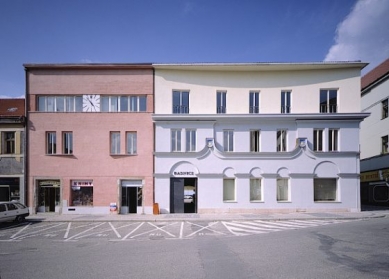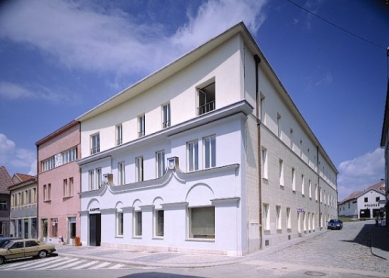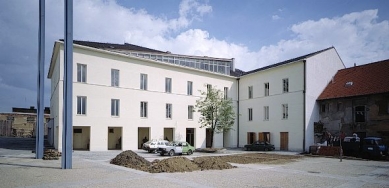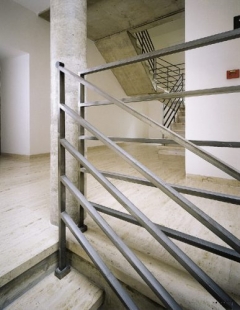
Town Hall in Benešov

The Town Hall
The town hall, occupying the spaces of two houses in the square, gained significance with the advent of democracy, and it was necessary to embody that with a construction act. We had the option to coldly demolish the old houses and build a new structure. However, the desire to build something new succumbed to the responsibility towards the place, whose memory and identity sometimes depend on such buildings as these two. The very bizarre decorative facade of questionable quality clearly symbolized the town hall for the citizens, with some even perceiving it as a certain uniqueness. We accepted the original sculptural facade as a symbol of the building's function - as a particular house sign. As a whole, we unified it with one color, resigned to its architectural quality, and turned it into a truly "just" architectural sign with significant communicative ability for the city's inhabitants. By making this decision, one had to accept the fact that the single town hall would paradoxically be in two houses, albeit dispositionally already with the logic of a cohesive house. The second (pink) house stands on the axis of the square. For this reason, it received a special color and became the bearer of the timepiece as a traditional element of town hall buildings. Somewhat in contrast to the external appearance of the building is its interior. The bold breakthrough of the stair hall into the historic ground floor with vaults dominates the layout. The hall carries the significance of a free democratic space, striving to resist fashion trends and represent a good and unchanging standard in every era. Everything is clear, straightforward, non-provocative, and to a certain extent conservative. The materials were chosen to declare neither wealth nor pomp but rather humility, durability, and a certain degree of unpretentiousness. The entire solution for the town hall was driven by the aim to create a certain hereditary fief that is acceptable to each generation.
















